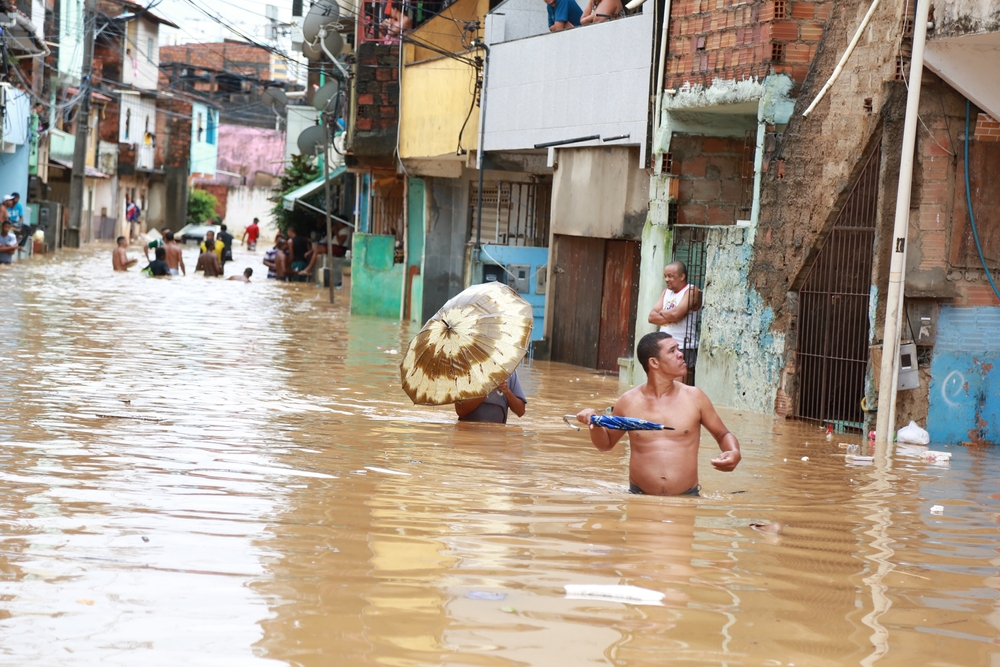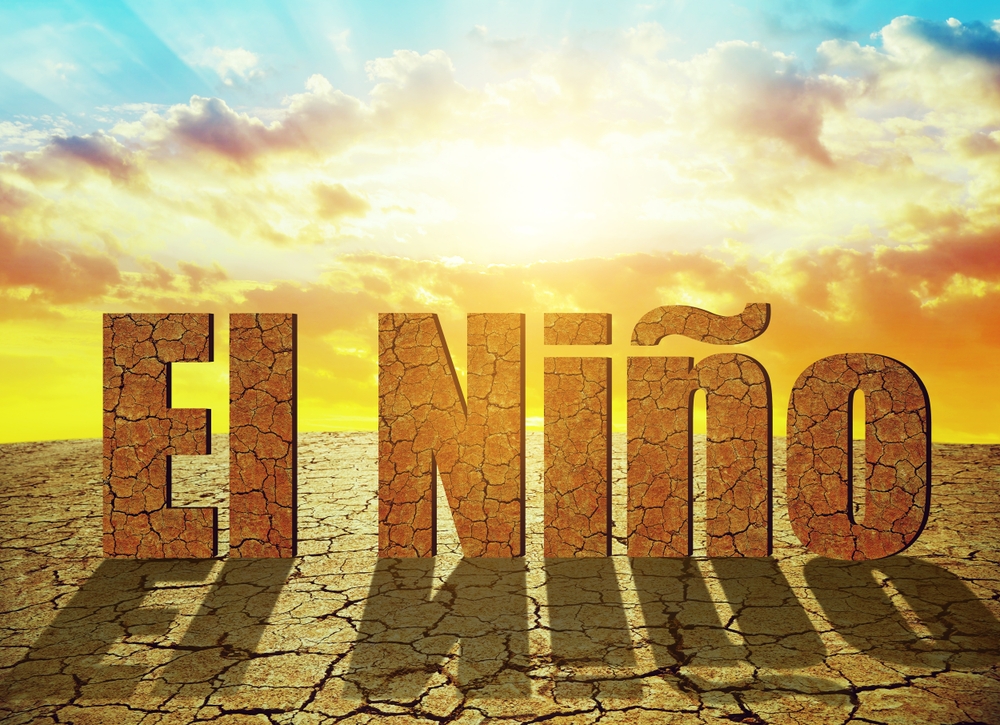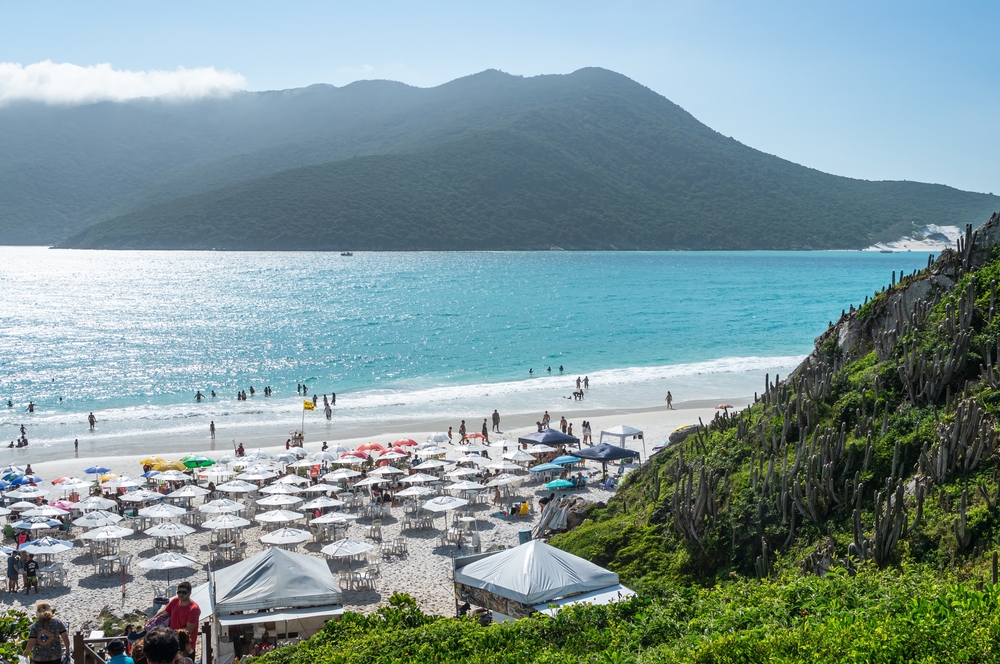Table of Content
ToggleIntroduction
The El Niño effect is a global weather phenomenon that occurs every few years and can have significant impacts on regional climates and weather patterns. Brazil, as the largest country in South America, is particularly vulnerable to the effects of El Niño due to its unique geography and climate. Understanding the impact of El Niño on Brazil is crucial for policymakers, farmers, and other stakeholders who need to plan for and mitigate the potential consequences of this phenomenon.
El Niño is characterized by warmer than usual sea surface temperatures in the Pacific Ocean, which can lead to changes in atmospheric circulation patterns and precipitation levels around the world. In Brazil, El Niño can result in droughts, floods, and other extreme weather events that can have significant impacts on agriculture, water resources, and biodiversity. The effects of El Niño can also have social and economic consequences, including food shortages and price increases.
Key Takeaways
- El Niño is a global weather phenomenon that can have significant impacts on regional climates and weather patterns.
- Brazil is particularly vulnerable to the effects of El Niño due to its unique geography and climate.
- Understanding the impact of El Niño on Brazil is crucial for policymakers, farmers, and other stakeholders who need to plan for and mitigate the potential consequences of this phenomenon.
Understanding El Niño Effect
El Niño is a weather phenomenon that occurs every few years and affects the climate of several countries, including Brazil. It is characterized by a warming of the ocean surface in the central and eastern Pacific Ocean, which leads to changes in atmospheric circulation and rainfall patterns.
During El Niño years, the trade winds that usually blow from east to west across the Pacific weaken, causing warm water to move eastward towards South America. This warm water heats up the atmosphere, which in turn affects weather patterns around the world.
In Brazil, El Niño can cause droughts in the northeast and floods in the south. It can also affect agriculture, as changes in rainfall patterns can lead to crop failures and lower yields. The impact of El Niño on Brazil can be significant, with economic losses estimated in the billions of dollars.
While El Niño is a natural phenomenon, climate change is thought to be making it more frequent and intense. Understanding the mechanisms behind El Niño and its effects on Brazil is important for policymakers and scientists to develop strategies to mitigate its impact on the country.

El Niño’s Global Impact
El Niño is an ocean-atmosphere phenomenon that occurs every two to seven years in the tropical Pacific Ocean. It is characterized by unusually warm ocean temperatures in the equatorial Pacific, which can have significant impacts on global weather patterns. El Niño events can last for several months to several years, and can affect everything from rainfall patterns to ocean currents.
The impacts of El Niño are felt around the world, from droughts and wildfires in Australia to flooding in Peru. In the United States, El Niño can bring heavy rainfall to California and the southern states, while causing drought in the Pacific Northwest. In Southeast Asia, El Niño can lead to drought and crop failures, while in Northeast Brazil, it can cause heavy rainfall and flooding.
El Niño can also have significant impacts on marine ecosystems. For example, during the 1997-1998 El Niño event, coral reefs in the Indian Ocean suffered mass bleaching, while fish populations in the Patos Lagoon estuary in Brazil were affected by changes in water temperature and salinity.
Overall, El Niño is a complex phenomenon that can have significant impacts on global weather patterns, marine ecosystems, and human societies. While scientists have made significant progress in understanding El Niño in recent years, there is still much to learn about this fascinating and important phenomenon.
Brazil’s Climate and Weather Patterns
Brazil is a large country with diverse climate and weather patterns. The country is located in the Southern Hemisphere, and its climate is predominantly tropical with a small portion of the country having a subtropical climate. The country’s climate is also influenced by the Amazon rainforest, the Andes mountain range, and the Atlantic Ocean.
The climate in Brazil is characterized by the occurrence of two distinct seasons, the wet season and the dry season. The wet season, also known as the rainy season, occurs from November to April, while the dry season occurs from May to October. During the wet season, the country experiences heavy rainfall, which is essential for the growth of crops and the replenishment of water sources. The dry season is characterized by low humidity, high temperatures, and little to no rainfall.
The El Niño effect has a significant impact on Brazil’s climate and weather patterns. During the El Niño phase, the country experiences reduced rainfall, particularly in the northern region. This reduction in rainfall can lead to droughts, which can have a severe impact on the country’s agriculture and economy. The El Niño effect can also lead to an increase in temperature, which can exacerbate the effects of droughts.
On the other hand, during the La Niña phase, the country experiences increased rainfall, particularly in the southern region. This increase in rainfall can lead to flooding, which can also have a severe impact on the country’s agriculture and economy.
In summary, Brazil’s climate and weather patterns are diverse, with distinct wet and dry seasons. The El Niño effect can have a significant impact on the country’s climate, leading to droughts and an increase in temperature, while the La Niña effect can lead to flooding.
El Niño’s Influence on Brazil’s Weather
El Niño, a weather phenomenon that occurs every 2-7 years, has a significant impact on Brazil’s weather patterns. During an El Niño event, the sea surface temperature in the Pacific Ocean rises, causing changes in atmospheric pressure and wind patterns. As a result, Brazil experiences changes in precipitation, temperature, and other weather-related variables.
According to a study published in Springer, El Niño mainly influences northern South America, including Brazil. The study found that continental rainfall in Brazil is influenced by El Niño, with the northeast region being particularly affected. During El Niño years, this region experiences below-average rainfall, leading to droughts and crop failures.
Another study published in IOP Science found that El Niño events strongly influence North Brazil’s DJF (December, January, and February) rainfall. The study used a large ensemble to quantify the likelihood of unprecedented low rainfall during El Niño events. The results showed that the chance of unprecedented dry conditions over North Brazil during El Niño events is high.
El Niño’s impact on Brazil’s weather is not limited to rainfall. A study published in Nature found that El Niño events have led to crop failures, starvation, and disease that killed hundreds of thousands in northeastern Brazil. The study summarized the full scope of El Niño’s influences on the South American continent, including Brazil.
In conclusion, El Niño has a significant impact on Brazil’s weather patterns, particularly in the northeast region. During El Niño years, Brazil experiences below-average rainfall, leading to droughts and crop failures. The chance of unprecedented dry conditions over North Brazil during El Niño events is high. El Niño’s impact on Brazil’s weather is not limited to rainfall and has led to crop failures, starvation, and disease in northeastern Brazil.
Agricultural Impact of El Niño in Brazil
El Niño and La Niña are natural phenomena that affect the climate of different regions of the world. In Brazil, El Niño causes a reduction in rainfall in the southern region and an increase in rainfall in the northeastern region, while La Niña causes the opposite effect. These changes in rainfall patterns have a significant impact on the agricultural sector in Brazil.
During El Niño events, the southern region of Brazil experiences droughts and heat waves, which can lead to a reduction in crop yields. Soybean and maize crops are particularly vulnerable to El Niño effects in Brazil, as they are the most widely grown crops in the country. A study conducted by ScienceDirect found that the impacts of El Niño events on soybean yields in southern Brazil vary depending on the phase of the phenomenon. During the El Niño phase, soybean yields tend to be lower, while during the La Niña phase, they tend to be higher.
The effects of El Niño on the agricultural sector in Brazil are not limited to crop yields. The phenomenon can also cause floods and landslides, which can damage crops and infrastructure. A study conducted by ScienceDirect found that the ENSO phenomenon alters the rainfall regime, causing significant impacts on Brazilian agriculture depending on its phase (El Niño or La Niña).
The Brazilian government has implemented various measures to mitigate the impacts of El Niño on the agricultural sector. These measures include the development of drought-resistant crops, the construction of irrigation systems, and the implementation of policies to promote sustainable agriculture. Despite these efforts, the agricultural sector in Brazil remains vulnerable to the impacts of El Niño and La Niña.
Impact on Brazil’s Water Resources
El Niño events have a significant impact on Brazil’s water resources. The phenomenon causes changes in the amount and distribution of rainfall, leading to droughts and floods in different regions of the country.
During El Niño years, the northeastern region of Brazil is particularly affected, as it experiences a decrease in rainfall. This region is already semi-arid, and the droughts caused by El Niño exacerbate the water scarcity problem. In 2015-2016, for example, the El Niño event caused a severe drought that affected millions of people in the region. The lack of water led to crop failures, livestock deaths, and social conflicts over water resources.
On the other hand, El Niño can also cause floods in other regions of Brazil, especially in the Amazon basin. The excess of rainfall can lead to landslides, river overflows, and the displacement of populations. In 2012, for example, the Amazon region experienced severe floods that affected more than 60 thousand people and caused significant economic losses.
The impacts of El Niño on Brazil’s water resources are not limited to the short term. The phenomenon can also have long-term effects on the country’s hydrological cycle, affecting the recharge of aquifers and the availability of water for different uses. Moreover, the frequency and intensity of El Niño events may change in the future due to climate change, making the water resources management in Brazil even more challenging.
To mitigate the impacts of El Niño on Brazil’s water resources, it is necessary to improve the monitoring and forecasting of the phenomenon, as well as to implement measures to increase the resilience of communities and ecosystems to droughts and floods. This includes the development of water storage systems, the promotion of efficient water use, and the restoration of degraded areas, among other strategies.
El Niño and Brazil’s Biodiversity
El Niño is a climatic event that has a significant impact on Brazil’s biodiversity. The event is characterized by a warming of the ocean surface in the central and eastern tropical Pacific, which can lead to extreme weather conditions in various parts of the world. In Brazil, El Niño has been associated with droughts, forest fires, and changes in the distribution and abundance of plant and animal species.
One of the most significant impacts of El Niño on Brazil’s biodiversity is the increase in the frequency and severity of forest fires. A study conducted in central Brazilian Amazonia found that El Niño-induced surface fires have significant management implications for flammable tropical forests. The study also highlighted the consequences of such fires for tropical forest biodiversity, which remain poorly understood.
Another study conducted in the eastern Brazilian Amazon region found that El Niño impacts human-modified tropical forests, leading to changes in the diversity and abundance of dung beetles. The study found that the impact of El Niño on dung beetle diversity was dependent on the type of forest and the severity of the El Niño event.
El Niño also has significant impacts on the coastal ecosystems of Brazil. A study conducted in the tropical semiarid coasts of Northeast Brazil found that floods and droughts associated with El Niño can threaten the ecological functioning and biodiversity of the coastal and marine ecosystems.
In conclusion, El Niño has significant impacts on Brazil’s biodiversity, including changes in the distribution and abundance of plant and animal species, an increase in the frequency and severity of forest fires, and changes in the diversity and abundance of dung beetles. The impacts of El Niño on Brazil’s biodiversity remain poorly understood and require further research to better understand and manage these impacts.

Socio-Economic Consequences in Brazil
El Niño events have a significant impact on Brazil’s economy and society. The effects of El Niño on Brazil can be felt in many sectors, including agriculture, infrastructure, and health.
During El Niño, Brazil experiences changes in precipitation patterns, leading to droughts in some regions and floods in others. These extreme weather events can have devastating effects on agriculture, which is a significant contributor to Brazil’s economy. For example, during the 2015-2016 El Niño event, droughts caused a significant decline in the production of coffee, soybeans, and other crops in Brazil. This decline in production led to higher prices for these commodities, which had a ripple effect on the global economy.
In addition to agriculture, El Niño can also impact Brazil’s infrastructure. Heavy rains and flooding during El Niño events can damage roads and bridges, leading to transportation disruptions and economic losses. For example, during the 2015-2016 El Niño event, heavy rains and flooding caused extensive damage to infrastructure in Brazil, including the closure of major highways and airports.
El Niño can also have significant impacts on public health in Brazil. During El Niño events, there is an increased risk of disease outbreaks, including dengue fever and Zika virus. These diseases are spread by mosquitoes, which thrive in warm, wet conditions. In addition, droughts during El Niño events can lead to water shortages, which can increase the risk of waterborne diseases.
Overall, the socio-economic consequences of El Niño in Brazil can be significant and far-reaching. As such, it is essential for policymakers and stakeholders to take steps to mitigate the impacts of El Niño on Brazil’s economy and society.
Brazil’s Mitigation and Adaptation Strategies
Brazil has implemented several mitigation and adaptation strategies to cope with the impacts of El Niño. These strategies aim to reduce the vulnerability of communities and ecosystems to El Niño-related weather events. Some of the key strategies are discussed below.
Agricultural Diversification
Brazil has implemented a strategy of agricultural diversification to reduce the dependence of farmers on a single crop. This strategy helps farmers to cope with the reduction in crop yields caused by El Niño-related droughts. For example, farmers in the Brazilian semi-arid region have diversified their crops to include drought-resistant crops such as beans, cassava, and sweet potatoes [1].
Water Management
Water management is another key strategy used by Brazil to cope with the impacts of El Niño. The government has implemented several measures to increase the availability of water during droughts. These measures include the construction of dams, reservoirs, and irrigation systems. For example, the Brazilian government has constructed the São Francisco River Integration Project, which aims to provide water to the semi-arid region of Brazil [2].
Forest Conservation
Brazil has also implemented strategies to conserve its forests, which play a crucial role in mitigating the impacts of El Niño. Forests help to regulate the water cycle, reduce soil erosion, and provide habitats for wildlife. Brazil has implemented policies to reduce deforestation and promote reforestation. For example, the Brazilian government has implemented the Amazon Fund, which provides financial incentives for forest conservation and sustainable development in the Amazon region [3].
In conclusion, Brazil has implemented several mitigation and adaptation strategies to cope with the impacts of El Niño. These strategies include agricultural diversification, water management, and forest conservation. These strategies have helped to reduce the vulnerability of communities and ecosystems to El Niño-related weather events.
[1] Enhancing adaptive capacity to climate change: The case of smallholder farmers in the Brazilian semi-arid region [2] São Francisco River Integration Project [3] Amazon Fund
Conclusion and Future Outlook
In conclusion, El Niño has a significant impact on Brazil’s climate and society. The country has experienced severe droughts, floods, and other extreme weather events due to the El Niño effect. The agricultural sector in Northeast Brazil has been particularly affected, with crop failures and food shortages.
Looking ahead, there is a need for better forecasting and decision-making tools to mitigate the impact of El Niño on Brazil. Climate models suggest that the frequency and intensity of El Niño events may increase in the future due to climate change. This could have far-reaching consequences for Brazil’s economy, environment, and society.
To prepare for these potential outcomes, policymakers and stakeholders must work together to develop adaptive strategies. This could include investing in drought-resistant crops, improving water management practices, and strengthening early warning systems for extreme weather events. By taking proactive measures, Brazil can minimize the impact of El Niño and build a more resilient future.
Frequently Asked Questions
What are the effects of El Niño on Brazil’s agriculture?
El Niño can have both positive and negative effects on Brazil’s agriculture. In some regions, El Niño can bring heavy rainfall, which can increase crop yields. However, in other regions, El Niño can cause droughts, which can lead to crop failures and lower food production. For example, northeastern Brazil has experienced severe droughts during El Niño events, which have had a significant impact on the region’s agricultural sector.
What are the economic impacts of El Niño on Brazil?
El Niño can have significant economic impacts on Brazil. The agricultural sector is particularly vulnerable to the effects of El Niño, as crop failures can lead to lower food production and higher food prices. In addition, El Niño can also affect Brazil’s energy sector, as hydropower generation can be reduced during droughts. This can lead to higher electricity prices and energy shortages.
How does El Niño affect Brazil’s weather patterns?
El Niño can affect Brazil’s weather patterns in a variety of ways. During El Niño events, Brazil can experience heavier rainfall in some regions, while other regions can experience droughts. In addition, El Niño can also affect Brazil’s temperature patterns, with some regions experiencing higher temperatures than usual.
What measures has Brazil taken to mitigate the impacts of El Niño?
Brazil has taken a number of measures to mitigate the impacts of El Niño. For example, the government has implemented drought-resistant crop varieties in some regions, and has also provided financial assistance to farmers affected by droughts. In addition, Brazil has also invested in alternative energy sources, such as wind and solar power, to reduce its dependence on hydropower during droughts.
What are the social impacts of El Niño on Brazil?
El Niño can have significant social impacts on Brazil. Droughts can lead to water shortages, which can affect both urban and rural populations. In addition, crop failures can lead to food shortages and higher food prices, which can have a disproportionate impact on low-income households. El Niño can also affect Brazil’s indigenous populations, who may rely on traditional farming practices that are vulnerable to droughts.
How does El Niño compare to other climate phenomena in terms of its impact on Brazil?
El Niño is one of several climate phenomena that can affect Brazil. Other phenomena, such as La Niña and the Atlantic Multidecadal Oscillation, can also have significant impacts on Brazil’s weather patterns and agricultural sector. However, El Niño is one of the most well-known climate phenomena and has been the focus of significant research and mitigation efforts in Brazil and around the world.













One Response